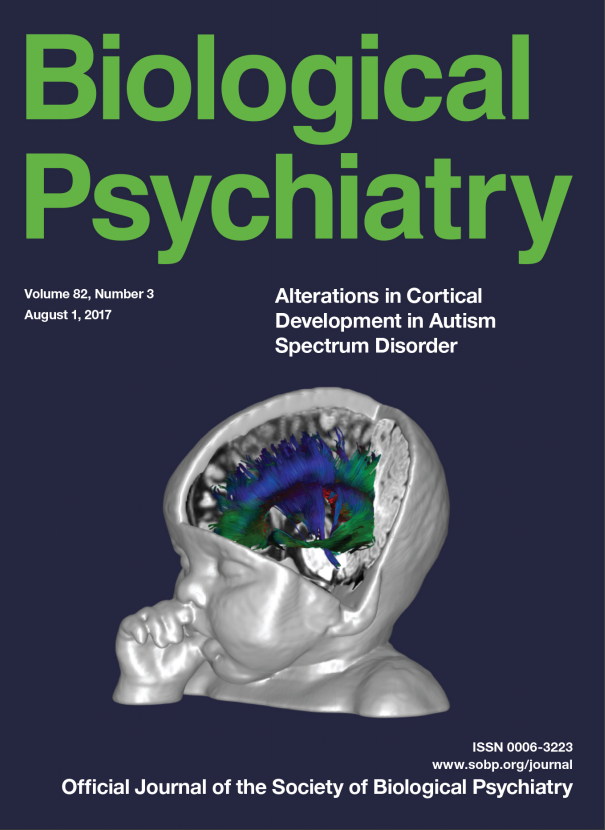https://doi.org/10.1016/j.biopsych.2017.03.006
John D. Lewis, Alan C. Evans, John R. Pruett Jr., Kelly N. Botteron, Robert C. McKinstry,
Lonnie Zwaigenbaum, Annette M. Estes, D. Louis Collins, Penelope Kostopoulos, Guido Gerig,
Stephen R. Dager, Sarah Paterson, Robert T. Schultz, Martin A. Styner, Heather C. Hazlett, and
Joseph Piven, for the Infant Brain Imaging Study Network
J. Piven, H.C. Hazlett, C. Chappell, S.R. Dager, A.M. Estes, D. Shaw, K.N. Botteron, R.C. McKinstry, J. Constantino, J.R. Pruett, R.T. Schultz, S. Paterson, L. Zwaigenbaum, J.T. Elison, A.C. Evans, D.L. Collins, G.B. Pike, V. Fonov, P. Kostopoulos, S. Das, G. Gerig, M.A. Styner, H. Gu
Author information
- Montreal Neurological Institute, McGill University, Montreal, QC
- Department of Psychiatry, Washington University School of Medicine, St.-Louis, MO
- Department of Radiology, Washington University School of Medicine, St.-Louis, MO
- Department of Pediatrics, University of Alberta, Edmonton, AB
- Department of Speech and Hearing Sciences, University of Washington, Seattle, WA
- Tandon School of Engineering, New York University, Brooklyn, NY
- Department of Radiology, University of Washington, Seattle, WA
- Center for Autism Research, University of Pennsylvania, Philadelphia, PA
- Department of Computer Science, University of North Carolina, Chapel Hill, NC
- Carolina Institute for Developmental Disabilities, University of North Carolina, Chapel Hill, NC
Abstract
Autism Spectrum Disorder (ASD) is a developmental disorder defined by behavioural features that emerge during the first years of life. Research indicates that abnormalities in brain connectivity are associated with these behavioural features. However, inclusion of individuals past the age of onset of the defining behaviours complicates interpretation of the observed abnormalities: they may be cascade effects of earlier neuropathology and behavioural abnormalities. Our recent study of network efficiency in a cohort of 24-month-olds at high and low familial risk for ASD reduced this confound; we reported reduced network efficiencies in toddlers classified as ASD. The current study maps the emergence of these inefficiencies in the first year of life.
Methods
The study utilizes data from 260 infants at 6 and 12 months of age, including 116 infants with longitudinal data. As in our earlier study, we use diffusion data to obtain measures of the length and strength of connections between brain regions in order to compute network efficiency. We assess group differences in efficiency within linear mixed-effects models determined by the Akaike information criterion.
Results
Inefficiencies in high-risk infants later classified as ASD were detected from 6 months onward in regions involved in low-level sensory processing. Additionally, within the high-risk infants, these inefficiencies predicted 24-month symptom severity.
Conclusion
These results suggest that infants with ASD, even before 6 months of age, have deficits in connectivity related to low-level processing, which contribute to a developmental cascade affecting brain organization, and eventually higher-level cognitive processes and social behaviour.



